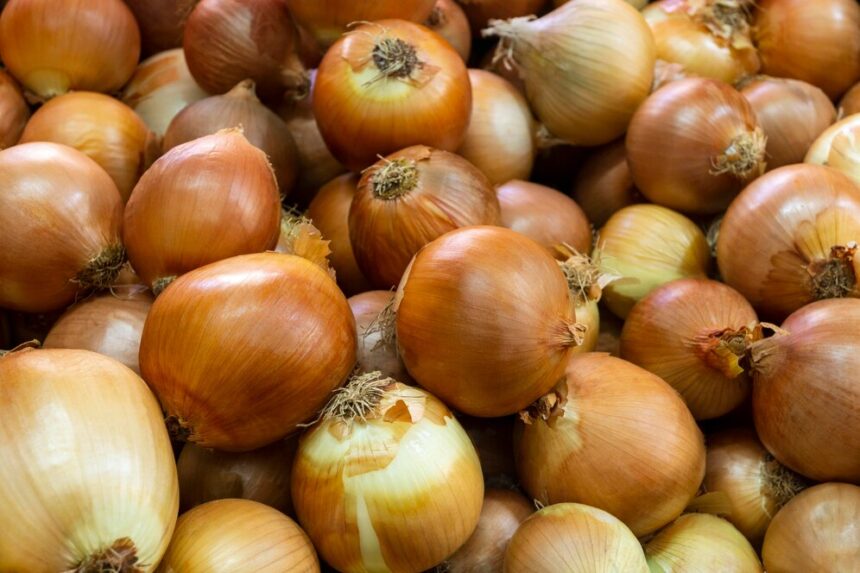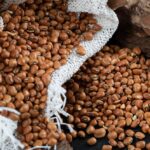Onions are a staple in kitchens around the world, known for their versatility and long shelf life. However, like any fresh produce, their shelf life can be shortened if not stored correctly. Proper storage techniques are essential for maintaining onion quality, preventing spoilage, and reducing food waste. Whether you buy onions in bulk or grow your own, knowing how to store them for longer shelf life is crucial for saving money and reducing trips to the store.
1. Choose the Right Type of Onion for Storage
Not all onions are created equal, and some varieties are better suited for long-term storage than others. When choosing onions for storage, consider the following:
- Storage onions (also known as dry onions), such as yellow onions, are ideal for long-term storage. These onions have a thicker outer skin and a lower moisture content, which helps them last longer.
- Sweet onions (such as Vidalia or Walla Walla), while delicious, have higher moisture content and should be used within a few weeks.
2. Proper Curing: A Crucial Step
Before storing onions, they must be properly cured. Curing allows the outer skins to dry and harden, which helps prevent mold and rot.
- Harvesting: If you’re growing your own onions, wait until the onion tops begin to fall over and dry out. This signals that the onions are ready to harvest.
- Curing process: Lay the harvested onions in a dry, well-ventilated area, away from direct sunlight. A shed, porch, or garage with good airflow is ideal. Allow them to cure for 2 to 3 weeks, turning them occasionally to ensure even drying.
- Check for proper curing: After curing, the outer skins should be papery and dry. The necks should also be tight, and the onions should feel firm when pressed.
3. Best Storage Conditions for Onions
Proper storage conditions are essential for extending the shelf life of onions. Keep these guidelines in mind:
- Temperature: Onions should be stored in a cool, dry place with a temperature between 4°C and 10°C. Too warm, and they will sprout; too cold, and they may freeze and become mushy when thawed.
- Humidity: Onions should be stored in a low-humidity environment. High humidity encourages mold growth and sprouting, which can drastically shorten their shelf life.
- Air circulation: Good airflow is crucial. Store onions in a mesh bag, wire basket, or a perforated container to allow air to circulate around the bulbs. This prevents moisture build-up, which could lead to rotting.
4. Storage Containers for Onions
Choosing the right container for storage can make a significant difference in how long onions last.
- Mesh bags or baskets: These allow air to circulate around the onions and help prevent mold or rot.
- Pantyhose: A clever and inexpensive storage solution is to use old pantyhose. Place individual onions in the legs of the pantyhose, tie a knot between each one, and hang the hose in a cool, dry place. This method keeps onions separate, preventing them from touching and decaying.
- Crates or bins with holes: If using crates or bins, ensure that they have enough holes for air circulation. Avoid plastic bags or airtight containers, as these can trap moisture and cause spoilage.
5. Avoid Storing Onions with Potatoes
While it might seem convenient to store onions and potatoes together, they should never be stored in the same area. Potatoes release moisture and gases that can cause onions to sprout or rot. Keep onions in a separate storage area or container to ensure their longevity.
6. How to Tell If Onions Are Spoiling
Even with the best storage methods, onions can spoil if they are not monitored regularly. Look for these signs of spoilage:
- Softness or squishiness: If an onion feels soft to the touch or squishes when you press it, it’s likely rotting and should be discarded.
- Sprouting: If you notice green shoots coming from the onion, it’s still safe to eat, but the quality and flavor may be diminished. Simply cut off the sprouts and use the rest of the onion.
- Mold: Any visible mold, especially on the outer layers, is a clear indication that the onion is past its prime.
7. Freezing Onions for Long-Term Storage
If you have more onions than you can use within a few months, freezing is an option. However, freezing onions may alter their texture, making them best suited for cooked dishes.
- Preparation: Peel and chop onions to your desired size. Place them on a baking sheet in a single layer and freeze for a few hours until solid.
- Storage: Once frozen, transfer the onions into an airtight freezer bag or container. Label with the date, and use within 3–6 months for the best flavor.
8. How Long Do Onions Last?
- Fresh, uncured onions: Typically last 1–2 weeks at room temperature.
- Properly cured and stored onions: Can last up to 6–8 months, depending on storage conditions.
- Frozen onions: Best used within 3–6 months for optimal flavor.
Storing onions properly can greatly extend their shelf life, saving you money and reducing food waste. By selecting the right onions, curing them thoroughly, and storing them in a cool, dry, and well-ventilated area, you can enjoy fresh, flavorful onions for months to come. Remember to check on them regularly and discard any spoiled ones to prevent them from affecting the rest of your stock. With these simple steps, you’ll keep your onions fresh and ready for use in all your culinary creations.







